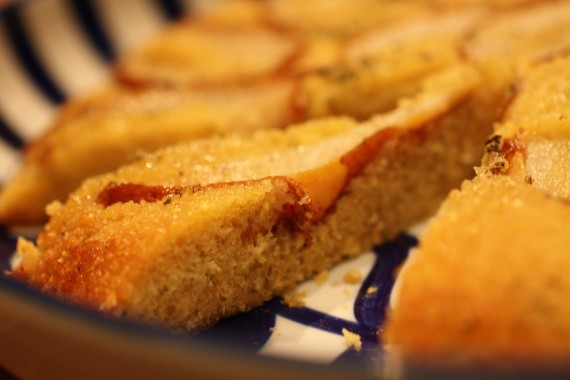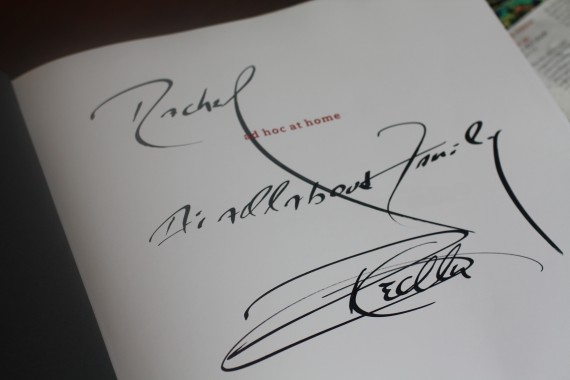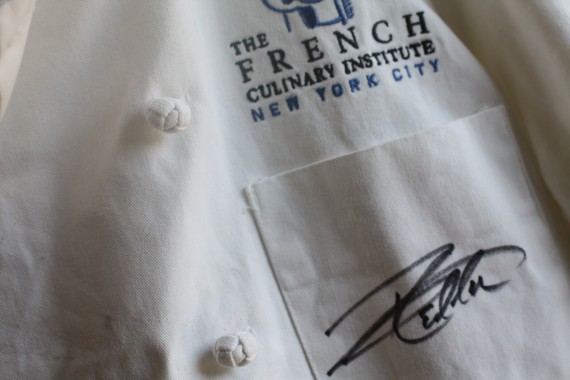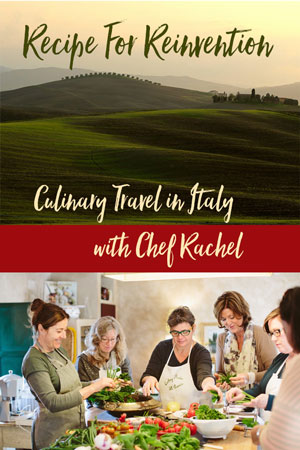Umami. OOOOOO MMMMMM AAAAAAAA MMMMMMMM EEEEEEEEE! No, you haven’t walked in on me during wild abandoned sex, or caught me trying to peel roasted chestnuts with my bare hands (again). No, silly. I’m talkin’ ’bout UMAMI! THE FIFTH TASTE! It seems that in addition to your garden variety tastes of sweet, sour, salty and bitter, a fifth taste has been isolated and thusly named. And this taste is the sort of savory, almost “meaty” flavor that occurs naturally in many foods and is produced by molecules called glutamates and ribonucleotides, WHATEVER that means! Umami is the DELICIOUSNESS, that certain something that makes you moan a little when you eat a bite of something and close your eyes while you are eating it so you can really, really taste it. Umami can be detected in ripe tomatoes (ooooo), bacon, (mmmmmm), Parmesan cheese (aaaaaaaa), soy sauce (mmmmmmm) and mushrooms (eeeeeeeee!) to name a few.
So it’s because of umami and it’s “meaty-ness” that I decided to build a dish out of mushrooms to satisfy the vegetarians who are coming to feast with us on Thanksgiving. Normally, they make do with the abundant side dishes I’ll have on hand, but this year I wanted to make a strong vegetarian centerpiece dish that would make their plates more balanced and less like carbo loading before a marathon. It’s so savory and lip-smackingly delicious, I have a feeling it is going to steal the whole meal. Five different types of fresh mushrooms, gobs of sweet red onions reduced down to carmelized gold, dried porcini mushrooms coming to life in steaming water that you save to enrich the red-wine/cayenne infused reduction the whole thing swims in. Excuse me, I have to wipe the drool from the corners of my mouth.
I made the dish this past weekend for a cooking demonstration at the William Sonoma store in Danbury, CT and it was a huge hit. The smell of the sauteeing onions and mushrooms got people drifting in from the four corners of the mall. It was packed in the store and folks were lined up for tastes. I had 45 requests for a copy of the recipe! I love doing the demos…I get to cook great food, with an audience (!), using amazing cookware (Le Crueset). Above you see a picture of my 15-year-old Le Creuset 5 1/2 quart round dutch oven. I use it everyday of my cooking life and it looks it! But it is a work horse and there is nothing like cast iron to deliver the even heat distribution and heat stability that we love. The Le Crueset cookware is heavy…but it is a good heavy.
By the way…here is Tot. He’s my main audience when I’m cooking up things at home. Here I caught him sniffing my pile of mushrooms. He’s a strict carnivore, but I think the umami thing almost had him fooled too.
Here’s the finished mushroom/onion filling for the cobbler, naked.

and the now dressed up with a beautifully browned parmesan biscuit topping.
I know you probably already have your whole menu planned for Thanksgiving, but if you have left it to the last minute (like I did with this post!) and need a WOW FACTOR dish, this is it! Or save it for Christmas dinner. Or on a wintery weekend night you make it your main course, and pair it with a fresh salad with crumbled gorganzola and glass of cabernet.
UMAMI Thankgiving!
Wild Mushroom Cobbler
For the filling:
2.5 lbs red onions
2.5 tablespoons olive oil
3 tablespoons butter
2 oz dried porcini
3-4 large Portabello mushrooms
1 lb shitake mushrooms
1/2 lb oyster or chanterelle mushrooms (whatever you can find )
one container of white button mushrooms
2 cloves garlic
pinch of dried thyme
pinch of cayenne
freshly ground black pepper and salt to taste
1/2 cup dry red wine
2-3 tablespoons all-purpose flour
1 1/2 cups reduced fat milk, heated
For the topping:
2 cups all-purpose flour
1 teaspoons baking soda
2 teaspoons baking powder
1 teaspoon coarse salt
4 tablespoons chilled butter
1/2 cup grated parmesan
1 1/3 cups buttermilk
Procedure:
1. Boil 1.5 cups water and pour over dried porcini. Let stand for at least 30 minutes
2. Peel and halve red onions. Slice thinly and evenly. I used a mandoline but if you don’t have one you can slice by hand or in a food processor using a slice attachment.
3. In a large, heavy skillet or dutch oven, heat 1-2 T of olive oil and 1-2 T of butter. Add onions and good pinch of salt. Cook over medium-low flame, stirring often, for 20 minutes or until the onions are nicely browned and thoroughly softened.
4. Using a damp cloth, wipe down the fresh mushrooms to remove any dirt. You can rinse them quickly instead with cold water, but don’t soak them in water to clean. They will absorb too much liquid a get soggy. Slice all the smaller fresh mushrooms. Quarter and slice the Portobellos to 1/4 inch thickness. Remove the porcini mushrooms from their soaking liquid and finely chop them. Reserve the liquid for later use.
5. Remove softened onions from pan. Reserve. In the same pan, over low-medium heat, melt 1-2 T of butter and 1-2 T of olive oil. Add chopped garlic and stir about 1 minute without letting garlic color or burn. Add fresh mushrooms and a good pinch of salt. Saute the mushrooms, stirring often until they start to release their liquid. Add the chopped porcini, the thyme, cayenne and black pepper, and keep cooking over medium flame until the excess liquid has cooked away and the mushrooms are sizzling and beginning to color a bit.
6. Sprinkle 1-2 T of flour over mushroom mixture and stir to coat thoroughly and brown the flour a bit. Add additional fat if needed to keep it from burning. Add the red wine, stirring to deglaze the brown bits on the bottom of the pan. As the wine reduces and thickens from the flour, add the soaking liquid from the porcini. Add the reserved onions and simmer all together for a few minutes. Liquid should thicken. Taste and adjust seasoning.
7. Pour the mushroom mixture into a lightly buttered, or cooking spray coated gratin/baking dish, spreading it evenly. Hold and let cool.
8. Prepare the biscuit dough: combine all the dry ingredients in the bowl of a food processor. Pulse to combine. Add chilled and cubed butter and pulse briefly until the mixture has the texture of coarse meal. Add the Parmesan cheese and pulse again to combine. Add the buttermilk and mix briefly until just combined. Do not overmix. Dough will be thick and sticky.
9. Spoon the biscuit dough onto the mushroom mixture, distributing it more or less evenly over the top, but it’s OK to leave little pockets of “air” between the spoons of dough so the mushroom mixture can bubble and breath underneath when you are baking it. It should look rustic. Bake for 12-15 minutes or until the biscuits are a light golden brown and firm to the touch.
You can also view this recipe at Relish.com
































